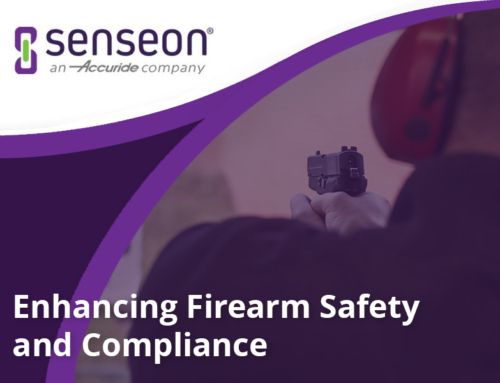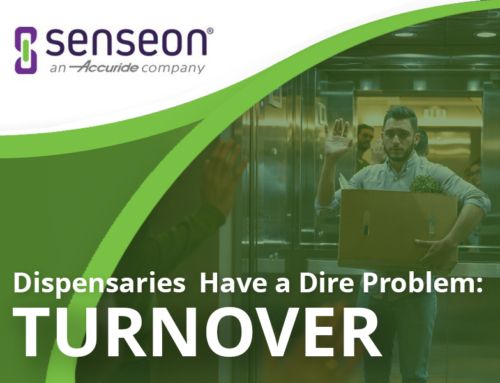By creating a clear-cut approach to retail security you’ll ensure every employee is on the same page—and committed to keeping your store safe.
Retail establishments are relying more heavily than ever on technology for security and risk mitigation. That’s a good thing, but it’s not enough. You also need to work closely with your employees to train them in safety. The more proactive your sales team is, the more likely they are to keep your high-risk and high-value products safe.
Only 12 percent of women and 16 percent of men receive safety training when hired for a new job, according to one study. Without it, employees have no understanding of how to spot theft, vandalism, or aggressive behavior nor how to react to it in a safe manner. Safety training can also help employees spot internal safety risks sooner, enabling them to better report these risks.
Safety training can’t be something to put on the back burner. It also doesn’t have to be challenging. Here’s how to mitigate risks within your business by training your employees in safety procedures.

An effective loss prevention strategy requires both security technology and thorough safety training for all employees.
Start with the Right Attitude at Hiring
When bringing new retail staff on, they need to be sales-oriented. While closing the deal is important, choose professionals with the ability to learn security mitigation. They don’t necessarily need to have these skills just yet. Rather, you want to ensure they have the ability and willingness to learn.
To achieve this, hire trainable associates who have the right attitude toward protecting your business. A positive person who shares your company’s attitudes and is passionate about your business success is going to be willing to learn how to protect it.
Provide Hands-on Training Sessions
Never assume an employee knows what to do when a situation occurs. If a customer wants to see a high-priced product up close, does your employee know how to present that product without putting it at risk?
Hands-on training methods are the most effective option. Create various scenarios of what could happen. Roleplay these scenarios to demonstrate the right moves and actions to take to achieve the desired outcome.
- Keep scenarios simple, but varied to show an assortment of what-if situations
- Provide valuable information in real-time to the employee; teach them what they could have done
- Use a variety of formats from true role-playing to podcasts, instructional videos, and demonstrations
- Roleplay both the good and the bad that can happen, exposing the individual to all levels of risk
- Use both one-on-one training sessions with employees as well as group training sessions (in a group, allow small teams to break off to role play)
This type of training session builds actual skill. When that risk scenario occurs later, the employee remembers what to do. They can visualize what they can do sooner. They also know what not to do to worsen the problem.
Limited on Time and Costs?
Training employees is critical in all cases, but not every retail establishment has a lot of time to dedicate to this type of security training, even if they recognize its importance. Find time at least once a month to work on employee safety training. In between sessions, consider other methods to continue the safety mindset.
For example, you can complete modular training programs—short bursts of training provided to employees in segments. In these scenarios, employees learn key skills within a matter of minutes and go back to work. You can do this on a frequent basis, providing staff with the education they need as they go.
Consider bringing staff in an hour or so before opening to provide this type of hands-on training in a faster way. With just one-hour segments like this, it is possible to provide employees with some level of training.
Make Security a Component of Onboard Training
You’ll teach your staff how to sell your products. You’ll teach them how to handle customer purchases and returns. But you’ll also have to make security a component of their new hire learning and onboarding, too.
Depending on the size and scope of your retail business, you may want to have a well-established, initial protocol in place for teaching new employees about security measures including:
- Providing access to product
- Handling angry customers
- Managing fraud risks
- Providing access to cash on hand
- Spotting theft
A comprehensive program like this ensures that every new employee knows how to react when necessary. It also means ensuring employees know what not to do to put the retail establishment at risk.
Provide the Key Tools for Improved Security
At the foundation of your security efforts has to be an intuitive, well-designed method for protecting your products and employees. By having a highly secure retail establishment, you deter would-be thieves from wanting to break in or aggressors from seeing your property as a viable, easy target.
Audit trails can deter theft, prevent losses, and provide data for prosecution. Access control systems with audit trail capabilities, such as Senseon Plus, associate access with the individual, noting the time and date they accessed a secure area. If there is an issue with stolen or missing items, it is easy to identify the break in secure access—or, in some cases, the actual thief.

Senseon’s highly-intelligent electronic locking systems provide multi-layer merchandise protection.
Senseon provides the secure access solutions your employees need to keep products secure and accessible when needed. Learn more about our retail security solutions and how they can enhance the security training you’re providing to employees.






